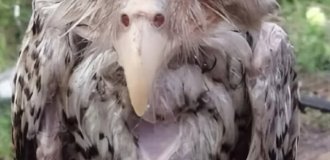Black metal tail: every night this bird “dies” to be resurrected in the morning (6 photos)
Did you know that the phoenix exists? Meet the black metal-tailed hummingbird. Every night, the tiny bird "dies" to be resurrected in the morning. How is this possible? I'll tell you now. 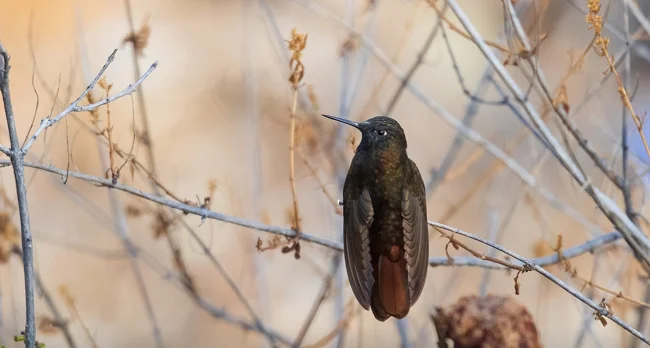
Yes, I don't have fiery feathers. But I can do something even cooler!
Let's start from afar. You could even say, from above. Our hero of today is registered in the Andes, on their western slopes. The footage varies: from 1,500 to 4,500 meters above sea level. The weather in such a place, as you understand, does not have the warm tenderness of the tropics and stability. If during the day the peaks warm up to positive temperatures, then at night the degrees drop to zero, keeping all the animals around in an iron fist. 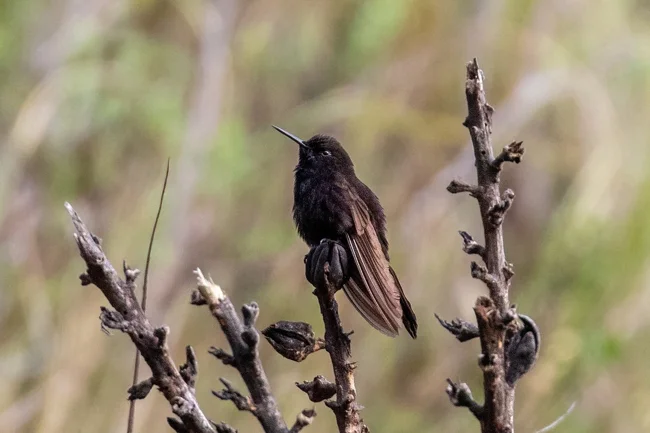
This hummingbird would perfectly get used to a sharply continental climate, where one day it is +10, and the next -10.
Most animals adapt to the vagaries of the weather using standard methods: they lay down fat, grow fur. But the metaltail cannot afford this. It is a hummingbird! The crumb will easily fit in a handful - 12.5 cm in length, 6 grams in weight. There is still room for another one in the palm of your hand! With such dimensions, you can’t store up enough fat to survive a cold night. 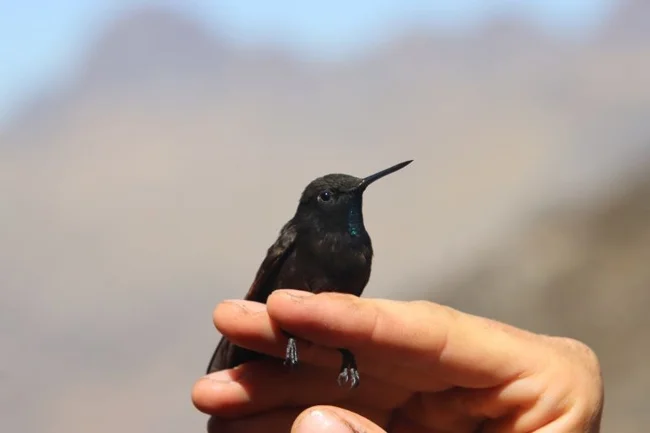
The black metaltail is endemic to Peru. This means that it is not found in other places.
During the day, the bird is fine: it flies, eats a lot - both flower nectar and small bugs. But all the calories that the bird ate in the sun, it spends almost immediately! Like any hummingbird, the black metaltail spends almost the entire day in flight, and this is an energy-consuming business. Especially when you flap your wings from 20 to 80 times per second. So the black metaltail decided: we save at night! 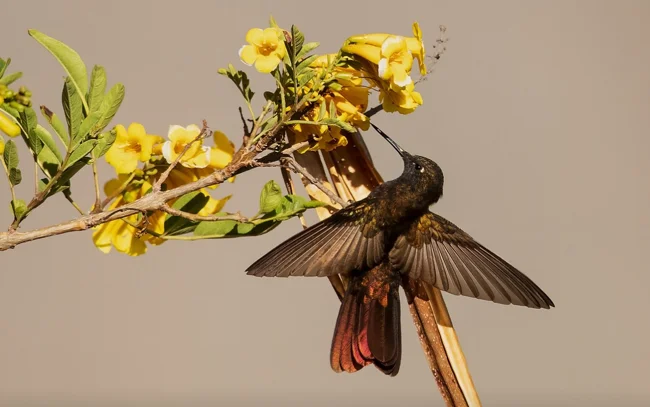
Sometimes hummingbirds do not collect nectar honestly, but steal it by piercing the inflorescences at the very base.
Everything ingenious is simple - if you can't beat the cold, become one with it! This state is called torpor, or numbness. Outwardly, it is somewhat reminiscent of hibernation: body temperature drops, metabolism slows down, heartbeat is reduced to a couple of beats per minute. Thanks to this, the body spends a minimum of energy to maintain vital processes. But if hibernation is a regular phenomenon, timed to specific seasons and natural cycles, then torpor occurs suddenly and briefly: during frosts or nighttime cold snaps. 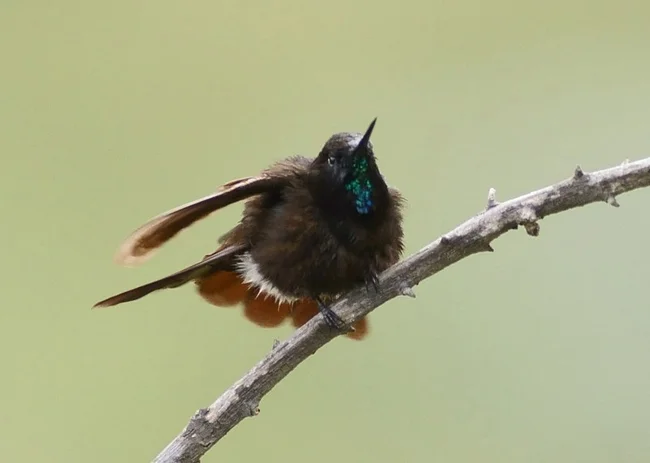
Pay attention to the turquoise collar. By it, you can definitely tell that you are looking at a male. Birds without it are females.
Torpor is observed in many hummingbirds. But the black metaltail is the absolute record holder in energy saving competitions among all birds and mammals that do not hibernate. The lowest recorded temperature for this species is +3.26°C. It's like being inside a refrigerator! Given that the bird's normal temperature is 42°C, and a hummingbird can spend up to 13 hours in the "freeze". 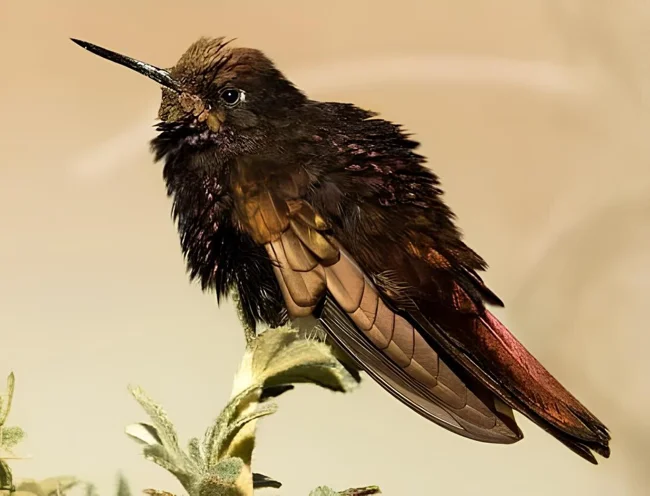
We are all a little resurrected after the "death" of a hummingbird when we get ready for work on Monday at 8 am.
With such indicators, any other animal could be declared dead. But not the metal-tailed one: its vital processes drop to borderline values. And in the morning, having warmed up in the sun, it is resurrected, just like a phoenix. Thanks to its superpower, the tiny bird was able to become the main species of hummingbird in the Andes. It is understandable: not everyone can learn to rise from the dead!
